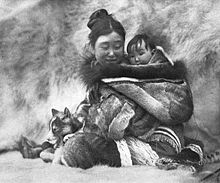
A documentary film or documentary is a non-fictional motion picture intended to "document reality, primarily for instruction, education or maintaining a historical record". Bill Nichols has characterized the documentary in terms of "a filmmaking practice, a cinematic tradition, and mode of audience reception [that remains] a practice without clear boundaries".

Robert Joseph Flaherty, was an American filmmaker who directed and produced the first commercially successful feature-length documentary film, Nanook of the North (1922). The film made his reputation and nothing in his later life fully equaled its success, although he continued the development of this new genre of narrative documentary with Moana (1926), set in the South Seas, and Man of Aran (1934), filmed in Ireland's Aran Islands. Flaherty is considered the father of both the documentary and the ethnographic film.
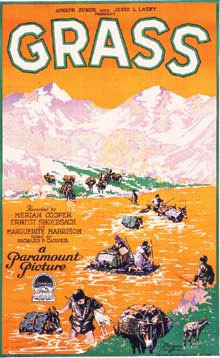
Grass: A Nation's Battle for Life is a 1925 documentary film that follows a branch of the Bakhtiari tribe of Lurs in Persia as they and their herds make their seasonal journey to better pastures. It is considered one of the earliest ethnographic documentary films. In 1997, Grass was selected for preservation in the United States National Film Registry by the Library of Congress as being "culturally, historically, or aesthetically significant."
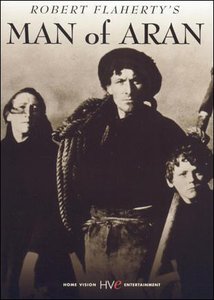
Man of Aran is a 1934 Irish fictional documentary (ethnofiction) film shot, written and directed by Robert J. Flaherty about life on the Aran Islands off the western coast of Ireland. It portrays characters living in premodern conditions, documenting their daily routines such as fishing off high cliffs, farming potatoes where there is little soil, and hunting for huge basking sharks to get liver oil for lamps. Some situations are fabricated, such as one scene in which the shark fishermen are almost lost at sea in a sudden gale. Additionally, the family members shown are not actually related, having been chosen from among the islanders for their photogenic qualities.

Moana is a 1926 American silent documentary film, or more strictly a work of docufiction, which was directed by Robert J. Flaherty, creator of Nanook of the North (1922).

Visual anthropology is a subfield of social anthropology that is concerned, in part, with the study and production of ethnographic photography, film and, since the mid-1990s, new media. More recently it has been used by historians of science and visual culture. Although sometimes wrongly conflated with ethnographic film, visual anthropology encompasses much more, including the anthropological study of all visual representations such as dance and other kinds of performance, museums and archiving, all visual arts, and the production and reception of mass media. Histories and analyses of representations from many cultures are part of visual anthropology: research topics include sandpaintings, tattoos, sculptures and reliefs, cave paintings, scrimshaw, jewelry, hieroglyphics, paintings and photographs. Also within the province of the subfield are studies of human vision, properties of media, the relationship of visual form and function, and applied, collaborative uses of visual representations.

Atanarjuat: The Fast Runner is a 2001 Canadian epic film directed by Inuit filmmaker Zacharias Kunuk and produced by his company Isuma Igloolik Productions. It was the first feature film ever to be written, directed and acted entirely in the Inuktitut language.
Zacharias Kunuk is a Canadian Inuk producer and director most notable for his film Atanarjuat: The Fast Runner, the first Canadian dramatic feature film produced entirely in Inuktitut. He is the president and co-founder with Paul Qulitalik, Paul Apak Angilirq, and Norman Cohn, of Igloolik Isuma Productions, Canada's first independent Inuit production company. Atanarjuat: The Fast Runner (2001), the first feature film that was entirely in Inuktitut was named as the greatest Canadian film of all time by the 2015 Toronto International Film Festival poll.

Salvage ethnography is the recording of the practices and folklore of cultures threatened with extinction, including as a result of modernization and assimilation. It is generally associated with the American anthropologist Franz Boas; he and his students aimed to record vanishing Native American cultures. Since the 1960s, anthropologists have used the term as part of a critique of 19th-century ethnography and early modern anthropology.

Overlord is a 1975 black-and-white British war film written and directed by Stuart Cooper. Set during the Second World War, around the D-Day invasion, the film is about a young British soldier's experiences and his meditations on being part of the war machinery, including his premonitions of death. The film won the Silver Bear - Special Jury Prize at the 25th Berlin International Film Festival. “Overlord is not about military heroics; on the contrary, it is about the bleakness of sacrifice”, Cooper said.

Peter Pitseolak (1902–1973) was an Inuk photographer, sculptor, artist and historian. Pitseolak was Baffin Island's first indigenous photographer.
Nanook, in Inuit mythology, is the master of bears.
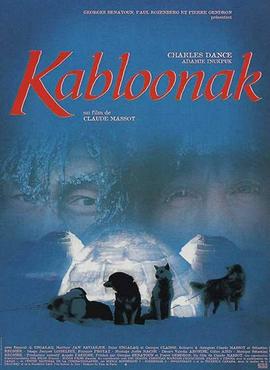
Kabloonak is a Canadian drama film, directed by Claude Massot and released in 1994.

Docufiction is the cinematographic combination of documentary and fiction, this term often meaning narrative film. It is a film genre which attempts to capture reality such as it is and which simultaneously introduces unreal elements or fictional situations in narrative in order to strengthen the representation of reality using some kind of artistic expression.
Ethnofiction refers to a subfield of ethnography which produces works that introduce art, in the form of storytelling, "thick descriptions and conversational narratives", and even first-person autobiographical accounts, into peer-reviewed academic works.

An ethnographic film is a non-fiction film, often similar to a documentary film, historically shot by Western filmmakers and dealing with non-Western people, and sometimes associated with anthropology. Definitions of the term are not definitive. Some academics claim it is more documentary, less anthropology, while others think it rests somewhere between the fields of anthropology and documentary films.
António Campos was one of the pioneer filmmakers of visual anthropology in Portugal. Mainly using pure documentary techniques, he shot ethnographic films and tried docufiction. As well as in fictional films, he used the methods of direct cinema to portrait the life of ancient human communities (ethnofiction) of his country.
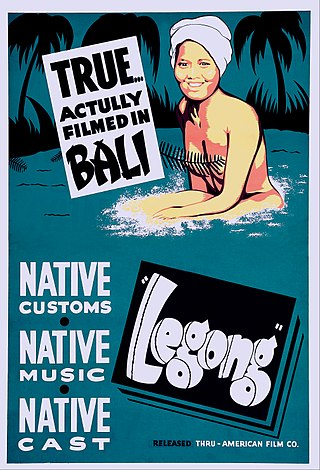
"Goona-goona epic" refers to a particular type of native-culture exploitation film set in remote parts of the Far East, Southeast Asia, Africa, South America, and the South Pacific. These include documentaries and dramas, both of which rely heavily on travelogue and stock footage scenes of semi-nude native peoples performing exotic rituals and customs.

Ethnocinema, from Jean Rouch’s cine-ethnography and ethno-fictions, is an emerging practice of intercultural filmmaking being defined and extended by Melbourne, Australia-based writer and arts educator, Anne Harris, and others. Originally derived from the discipline of anthropology, ethnocinema is one form of ethnographic filmmaking that prioritises mutuality, collaboration and social change. The practice's ethos claims that the role of anthropologists, and other cultural, media and educational researchers, must adapt to changing communities, transnational identities and new notions of representation for the 21st century.
Collage film is a style of film created by juxtaposing found footage from disparate sources. The term has also been applied to the physical collaging of materials onto film stock.


